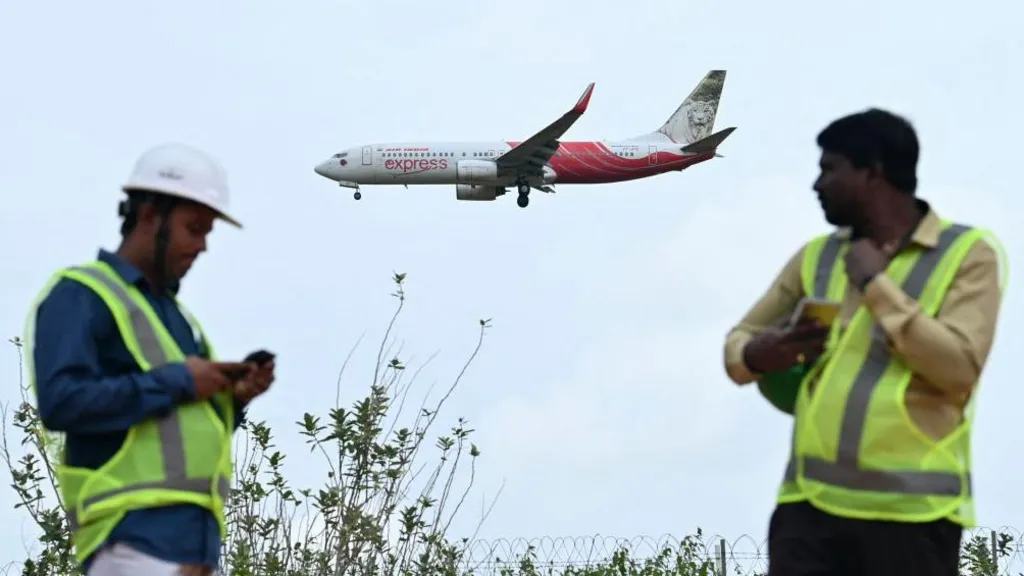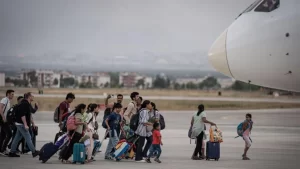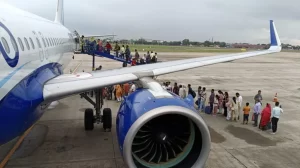The Impact of Hoax Bomb Threats on Air Travel in India
4 min read
India is one of the fastest growing airline markets in the world

India is one of the fastest growing airline markets in the world
India’s aviation sector is facing a significant crisis due to a dramatic rise in hoax bomb threats that have disrupted flight schedules and diverted numerous planes. These incidents have not only created chaos for airlines but have also caused considerable distress for passengers.
One striking example occurred on October 15, when an Air India Boeing 777, originally flying from Mumbai to Chicago, was diverted to Iqaluit, a remote city in Canada, after a bomb threat was reported. Passengers, numbering 211, found themselves stranded in frigid temperatures, as documented in a video shared on social media. Harit Sachdeva, a passenger, expressed frustration about the lack of information from Air India, stating, “We have no idea what’s happening or what we are supposed to do next… We are completely stranded.” Thankfully, hours later, a Canadian Air Force plane was able to transport the passengers to their intended destination, but the incident highlighted the chaotic nature of the situation.
Air India confirmed that the diversion was due to a “security threat posted online,” which turned out to be a false alarm. This incident is part of a worrying trend, as authorities reported over 90 hoax threats in just one week. In June, 41 airports were targeted with bomb threats sent via email in a single day. To put this in context, between 2014 and 2017, there were only 120 bomb hoax alerts recorded at airports, nearly half aimed at Delhi and Mumbai. This year, however, has seen an alarming increase in such threats.
Federal aviation minister Kinjarapu Ram Mohan Naidu expressed his deep concern about the ongoing disruptions, stating, “Such mischievous and unlawful actions are a matter of grave concern.” He condemned any attempts to compromise the safety and integrity of the aviation sector.

So what is driving this surge in hoax threats? Experts suggest that these threats are often motivated by malicious intent, attention-seeking behavior, mental health issues, or simply as pranks. For instance, in 2018, a series of bomb jokes by passengers in Indonesia resulted in significant flight disruptions. In another case last year, a disgruntled passenger in Bihar called in a bomb hoax after missing his check-in, hoping to delay a SpiceJet flight.
These incidents pose serious challenges for India’s rapidly growing aviation market. Last year, over 150 million passengers flew domestically in India, with more than 3,000 flights taking off and landing daily from over 150 operational airports. On October 14, airlines recorded a record high of 484,263 passengers on a single day, showcasing the increasing demand for air travel. However, this surge in hoaxes threatens to undermine that growth.
The ramifications of a bomb threat alert are extensive. If a flight is already in the air when a threat is received, it must divert to the nearest airport. This was the case for the Air India flight diverted to Canada, as well as a September incident where a Vistara flight bound for Frankfurt was diverted to Turkey. In some instances, fighter jets are scrambled to escort planes reporting threats, leading to heightened security measures.
Once on the ground, passengers must disembark, and all baggage and cargo undergo thorough inspections. This process can take several hours, often requiring a replacement crew to be arranged due to duty hour limitations for the original staff. Sidharath Kapur, an independent aviation expert, emphasized that “every diverted or delayed flight incurs substantial expenses,” and these disruptions can lead to a ripple effect of cancellations and schedule imbalances.

The rise of bomb threats communicated via social media by anonymous accounts complicates the identification of perpetrators. Last week, authorities arrested a 17-year-old for making threats via a newly created social media account. Investigators suspect that some threats may have originated from locations as far away as London and Germany.
Despite strict penalties, including potential life imprisonment for threats to airport safety, the legal framework struggles to address the issue effectively. Reports indicate that the government may consider placing offenders on a no-fly list and introducing new laws that could impose five-year prison terms for such actions.
Ultimately, the ongoing threat of hoaxes creates anxiety among travelers. An aviation consultant shared an anecdote about a family member contemplating alternate travel methods due to fears surrounding these threats. “I told her, ‘Please continue to fly,’” he remarked, underscoring the pervasive fear that hoax threats instill.
As the situation unfolds, the impact of these hoax bomb threats continues to disrupt air travel in India, highlighting the urgent need for effective solutions to safeguard both passengers and the integrity of the aviation sector.